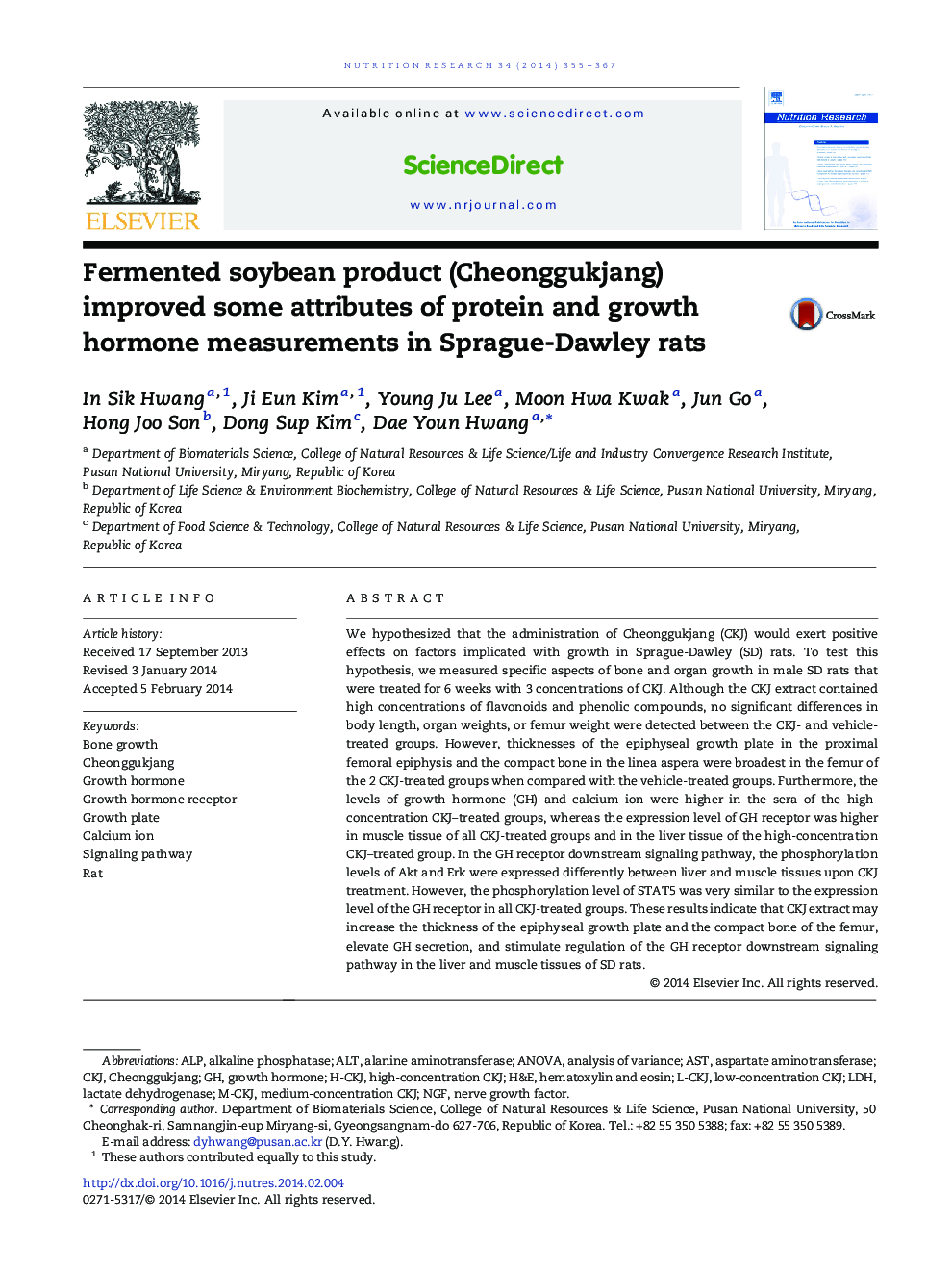| Article ID | Journal | Published Year | Pages | File Type |
|---|---|---|---|---|
| 5904388 | Nutrition Research | 2014 | 13 Pages |
Abstract
We hypothesized that the administration of Cheonggukjang (CKJ) would exert positive effects on factors implicated with growth in Sprague-Dawley (SD) rats. To test this hypothesis, we measured specific aspects of bone and organ growth in male SD rats that were treated for 6 weeks with 3 concentrations of CKJ. Although the CKJ extract contained high concentrations of flavonoids and phenolic compounds, no significant differences in body length, organ weights, or femur weight were detected between the CKJ- and vehicle-treated groups. However, thicknesses of the epiphyseal growth plate in the proximal femoral epiphysis and the compact bone in the linea aspera were broadest in the femur of the 2 CKJ-treated groups when compared with the vehicle-treated groups. Furthermore, the levels of growth hormone (GH) and calcium ion were higher in the sera of the high-concentration CKJ-treated groups, whereas the expression level of GH receptor was higher in muscle tissue of all CKJ-treated groups and in the liver tissue of the high-concentration CKJ-treated group. In the GH receptor downstream signaling pathway, the phosphorylation levels of Akt and Erk were expressed differently between liver and muscle tissues upon CKJ treatment. However, the phosphorylation level of STAT5 was very similar to the expression level of the GH receptor in all CKJ-treated groups. These results indicate that CKJ extract may increase the thickness of the epiphyseal growth plate and the compact bone of the femur, elevate GH secretion, and stimulate regulation of the GH receptor downstream signaling pathway in the liver and muscle tissues of SD rats.
Keywords
Related Topics
Life Sciences
Biochemistry, Genetics and Molecular Biology
Endocrinology
Authors
In Sik Hwang, Ji Eun Kim, Young Ju Lee, Moon Hwa Kwak, Jun Go, Hong Joo Son, Dong Sup Kim, Dae Youn Hwang,
